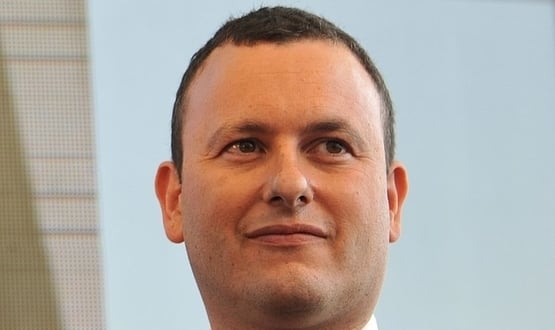Joe’s View: On Matt Hancock and hoping that, this time, it’s for real
- 7 March 2019

Professor Joe McDonald has seen many national NHS IT leaders come and go, ultimately failing in their attempts to change culture. But in Matt Hancock, our CCIO columnist thinks that he just might see something different.
The bullet fragments danced white hot at the back of the range like malevolent Tinkerbells as I emptied the magazine of my AK-47 into my victim slowly and deliberately, experiencing the sudden empowerment that millions of teenagers around the world get the first time their sergeant/teacher/mentor/priest/elder hands them their ticket to manhood/martyrdom/democracy/hell.
The power is visceral, the noise deafening; it shakes my internal organs and stirs my blood. Raw power.
I follow up with the American M4 Carbine, a flashy three second burst of fire and fury. But in the semi-darkness of the range, so much muzzle flare I can’t actually see the target so I miss high and right. Then a handgun, a Glock 9 millimetre. I empty two nine bullet clips into my cardboard foe in a worryingly satisfying grouping in and around the heart.
“Good job, Joe,” Rosita yells over the noise. “You nailed that MoFo but good!”
“Errrrr… Thanks, Rosita.”
A trendy lefty, lifelong Labour-voting gun-phobe when I went in, I now confidently know my weapon of choice in the event of a zombie apocalypse. I’m competent with the AK but professionally lethal with the Glock 9 mill.
A culture shock
It was the day before HIMSS, the world’s biggest health IT conference in Orlando, Florida and it was raining. The Sunshine state has much to offer on a sunny day, not least more theme parks than you could throw a politically incorrect dolphin at. Less so on a rainy day.
It was Google that suggested a visit to Machine Gun America. I called a cab and and 10 minutes later I was at the shop, which is located between a car repair place and a Wendy’s burger joint. A sign outside said “Machine Gun America – A Great Day Out For All Family”. Yes, really.
I paid the required rental and Rosita photocopied my UK driving licence and gave me an iPad displaying all the different firearms I might like to try. I picked three and 10 minutes later I was firing live ammunition. No questions about my health, nome about my drug or alcohol habits or mental health, no breathalyser.
Rosita, my delightful diminutive instructor, wore a t-shirt which read: “Due to the increase in the price of ammunition I can no longer fire warning shots – I shoot to kill.” Clearly a culture quite different from what I’m used to.
Over the following week at the conference, I see two mass shootings on the news. They don’t make the BBC because it was ‘just’ a case of two adults killing workmates. It’s not international news unless it’s kids shooting other kids.
Surely to God such a culture can never be justified and cannot persist for long, right? Or so I thought until I had it explained to me a few days later by my Everglades airboat driver, Captain Chuck, in a bar full of incredibly polite Hell’s Angels eating fried alligator (long story for another day).
“Look, Joe,” he yelled (airboat driving is clearly bad for your ears). “It’s my constitootional right to bear arms. It keeps the government honest and what’s more any damned crazy fool with ID can get a machine gun here, so you’d be a fool not get a gun. Sheeeeeeit, you’re not even a citizen and you got a machine gun, right? You got life insurance, right? Me too,” he said, tapping the bulge in his leather jacket.
There is a certain self-fulfilling logic to this culture. It just keeps rolling. Year after year.
A consistent optimism
Now regular readers will know I have been worried about NHS IT culture for a number of years. I’ve written about it regularly, not least during changes of organisation or leadership. I wrote about it when NHS Connecting for Health thankfully bit the dust.
I wrote about it again on my election as chairman of the CCIO Network. And on the arrival of Tim Kelsey as national director of patients and information.
There was another brief moment of hope when Beverley Bryant was in charge. But all too soon that new dawn faded and the forces of cultural stagnation triumphed.
Again my hopes rose on the appointment of Sarah Wilkinson as the new chief executive of NHS Digital.
Rereading these articles, I’m struck by a constant theme – my consistent optimism that new leaders will have the ability to change the long-standing toxic culture in NHS IT; a secretive, paranoid and paternalistic culture, failing to engage with the public; a culture in which the CCIO and CIO communities, who form the end users group of NHS IT, feel solely charged with delivering the improvement required to move the NHS forward 30 years; a culture obsessed with sharing your data without your permission rather than being obsessed with seeking that permission.
But to be fair to each of those new leaders, the fracture of NHS IT into so many silos means that – no matter how bold or committed any new head of any given silo is – the system doesn’t give them the clout to change the overall picture. My view is that it will need a ministerial-level change to bring about the cultural revolution required.
A bull in a china shop? We could probably use one
Enter Matt Hancock, my political antithesis – a Tory and, worse still, a Brexiteer. He is pilloried in the HSJ as ‘App Happy Matt and polling on this site indicates the majority of you have no faith in the idea of NHSX: “Just rearranging the deck chairs on the Titanic”; “Tigger on speed”; “Here today, gone tomorrow”; “A bull in china shop”.
So why would a card-carrying champagne socialist like me put faith in NHSX, the new joint policy unit intended to oversee digital transformation in healthcare? Why do I believe that he might be able to change our broken culture in NHS IT when so many before him have failed?
In part because I think this particular china shop has been long overdue a bull. Sometimes a culture is so stuck that it needs one. Now, I’m not a psychiatrist or anything (just these 30 years) but I think Hancock may have the ego, strength and impatience to begin to shift the culture of NHS IT.
In September, he spoke to the Observer about his vision for information sharing. “It has to be based on consent,” he said. “So your data about your health is your property. That is my starting point. That must be the principle that I will put at the foundation of data protection in the NHS.” Currently, though, the technocracy in the upper echelons seems to be ploughing on with a vision completely at odds with that. Something will have to give.
Like when your football club gets a new owner, we will know how serious the secretary of state is in his desire to mend our NHS IT culture by two things: firstly who he fires, and secondly who he hires.
NHSX will need a new and truly transformational leader, fully engaged with the public and with the CIO and CCIO Networks, not more of the same. Someone with a track record of leading cultural change. A person of the highest calibre, at least nine millimetre. And we will need to engage with that new leader – otherwise I fear we will get the NHSX we deserve.





6 Comments
Joe,
I wish I could share your optimism. Matt Hancock certainly has energy, drive, ambition and enthusiasm but he seems to see technological answers to every problem. Not enough diagnostic staff in the NHS to maintain minimum cancer waiting times? Invest in vapourware AI software at some indeterminate time in the future and scrap those waiting time targets … no-one’s meeting them anyway! GP training and recruitment being outstripped by GPs quitting the NHS? Invest in Facetime/Skype video consultations, even though 8.4% of the UK adult population has never used the Internet – mainly the older generation which statistically needs access to the GP more than anyone else.
Resolving cultural NHS IT issues by diktat from Richmond House is impossible. NHS IT is central to the digitisation of clinical services but CIOs face CIP targets at a time when more investment is needed. Until the culture is changed and IT is seen by central government as an enabler of whole system transformation instead of just another Cost Centre and until digital transformation is sustainably funded long term from revenue and not on an ad hoc basis from capital we seem doomed to repeat the mistakes of the past – whoever happens to be the current SoS for Health
Interesting . Any you English NHS people willing to comment here?
Fair comment Dave, maybe I am pathologically optimistic but I live in hope.
Wrong Joe. I don’t know your background but you are obviously unaware of the 3Ps of any IT activity: People, Processes and Products (Technology), which work in synergy. Matt is concentrating on technology when what is broken in the NHS are the processes which, when defined to remedy the root problems, are implemented via technology, or even a paper system, whichever is best. This is a mistake. All technology will do is speed up the issues occurring.
I have spent very close to 50 years in IT, Matt has spent none, to my knowledge, so guess who will be proven right in the end? I don’t think we need a referendum to get the answer.
Spot on, Joe. I sincerely hope (for the NHS’s and England’s sake) that you are right, and that Matt Hancock is able to see this through despite the sheer momentum trying to continue in a simply wrong direction.
Thanks for showing an interest Terry, well aware of the three Ps. My point is that the people and processes have been largely the same for 15 years. it needs shaking up.
Comments are closed.